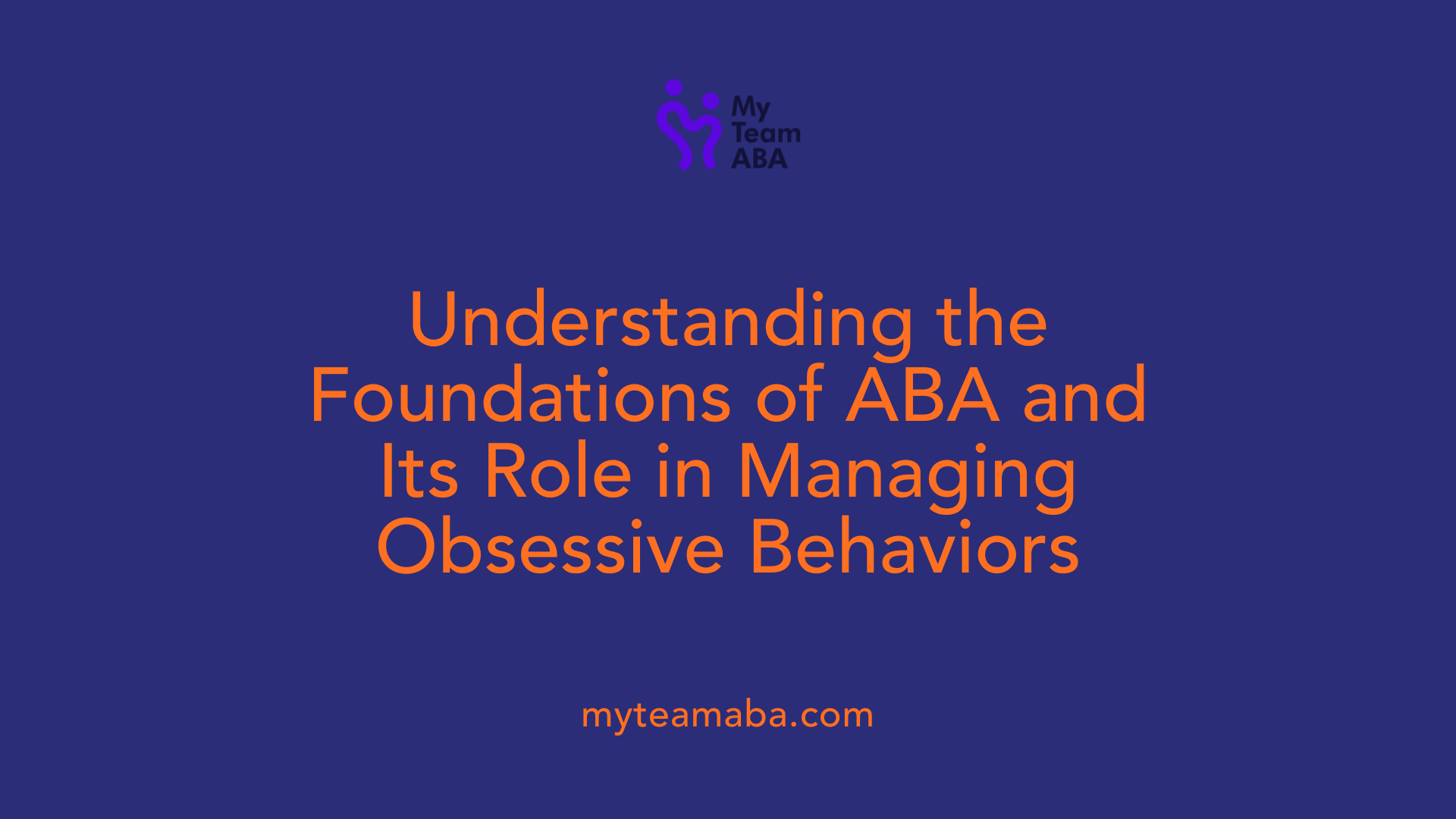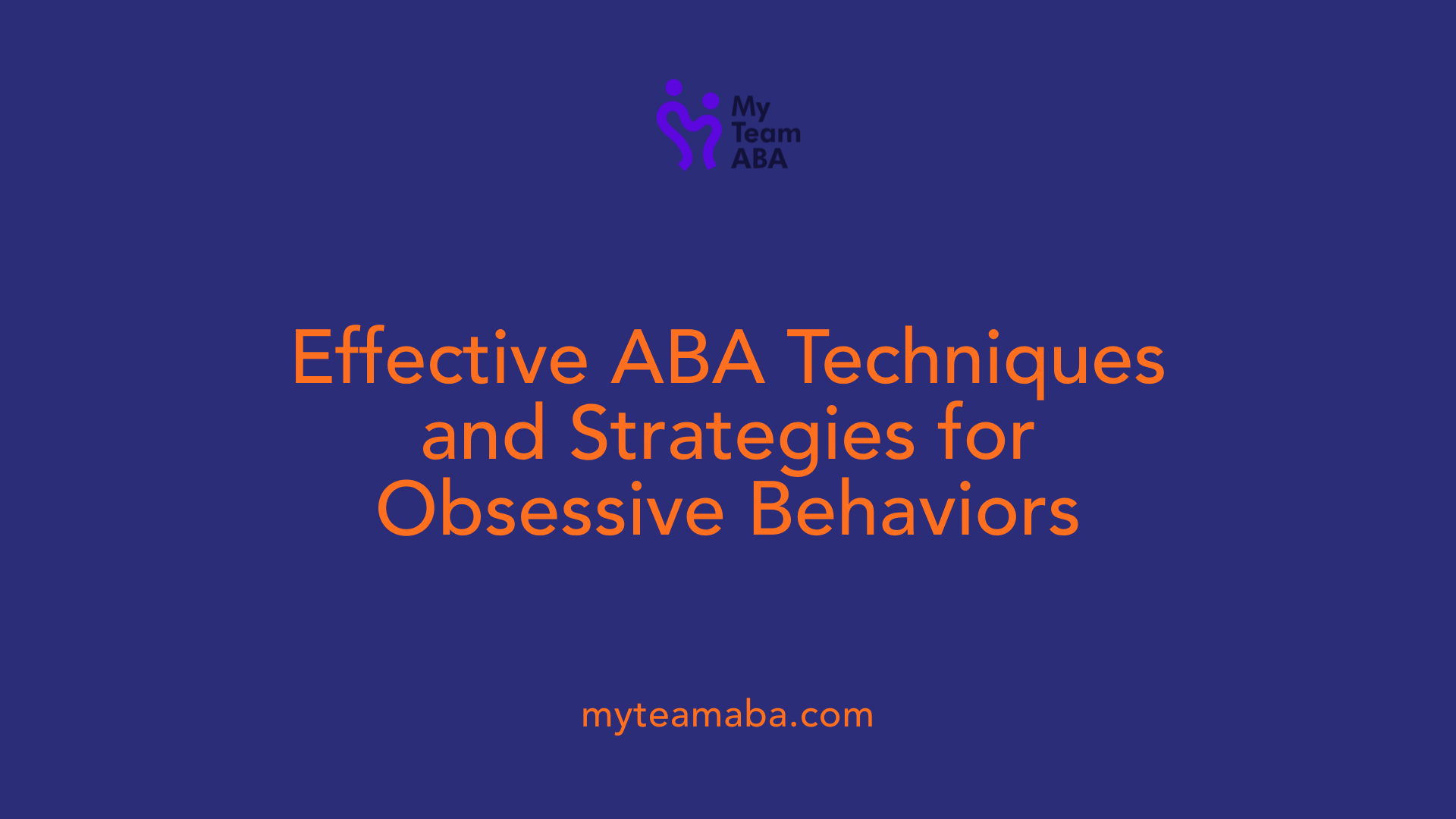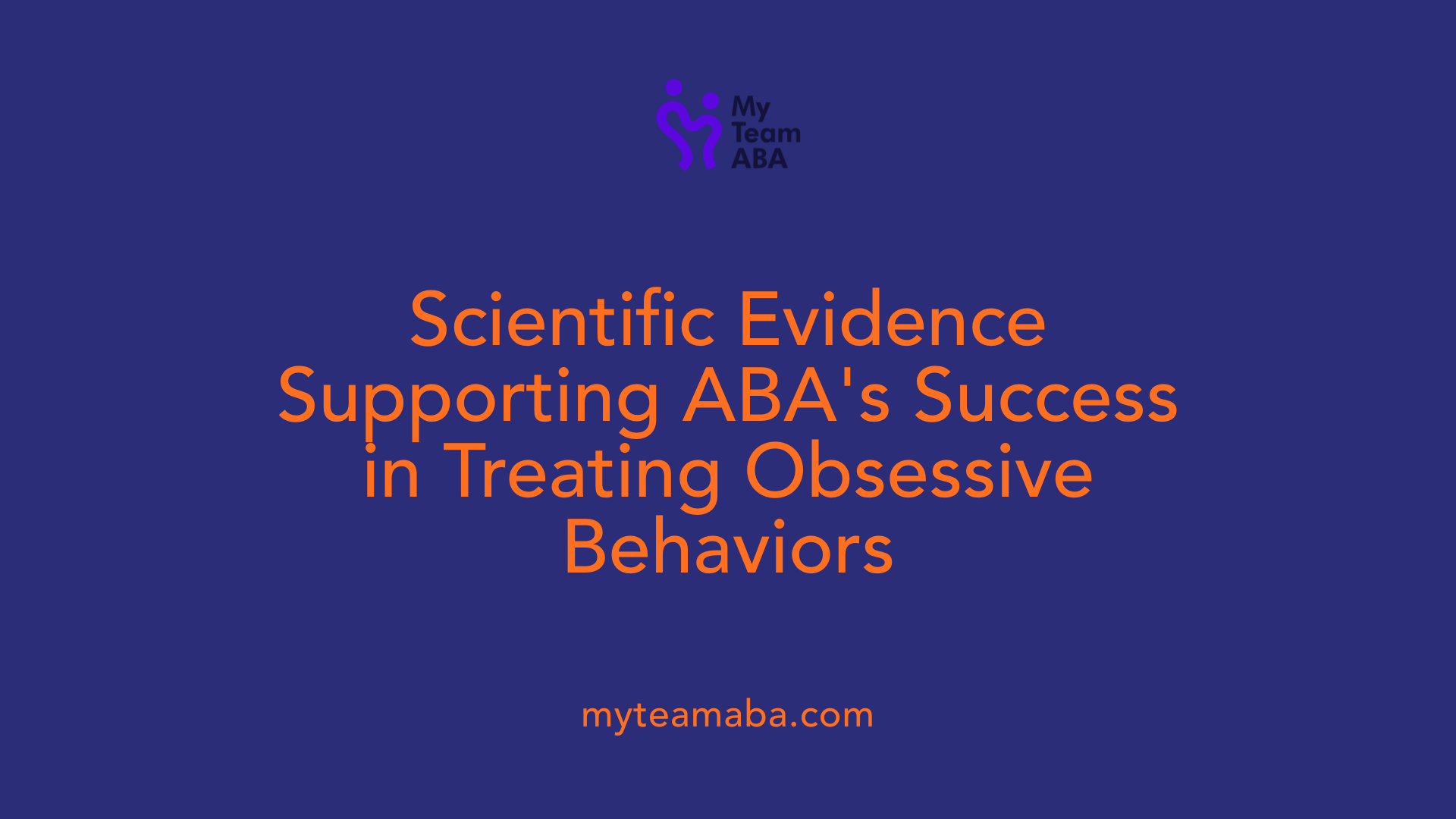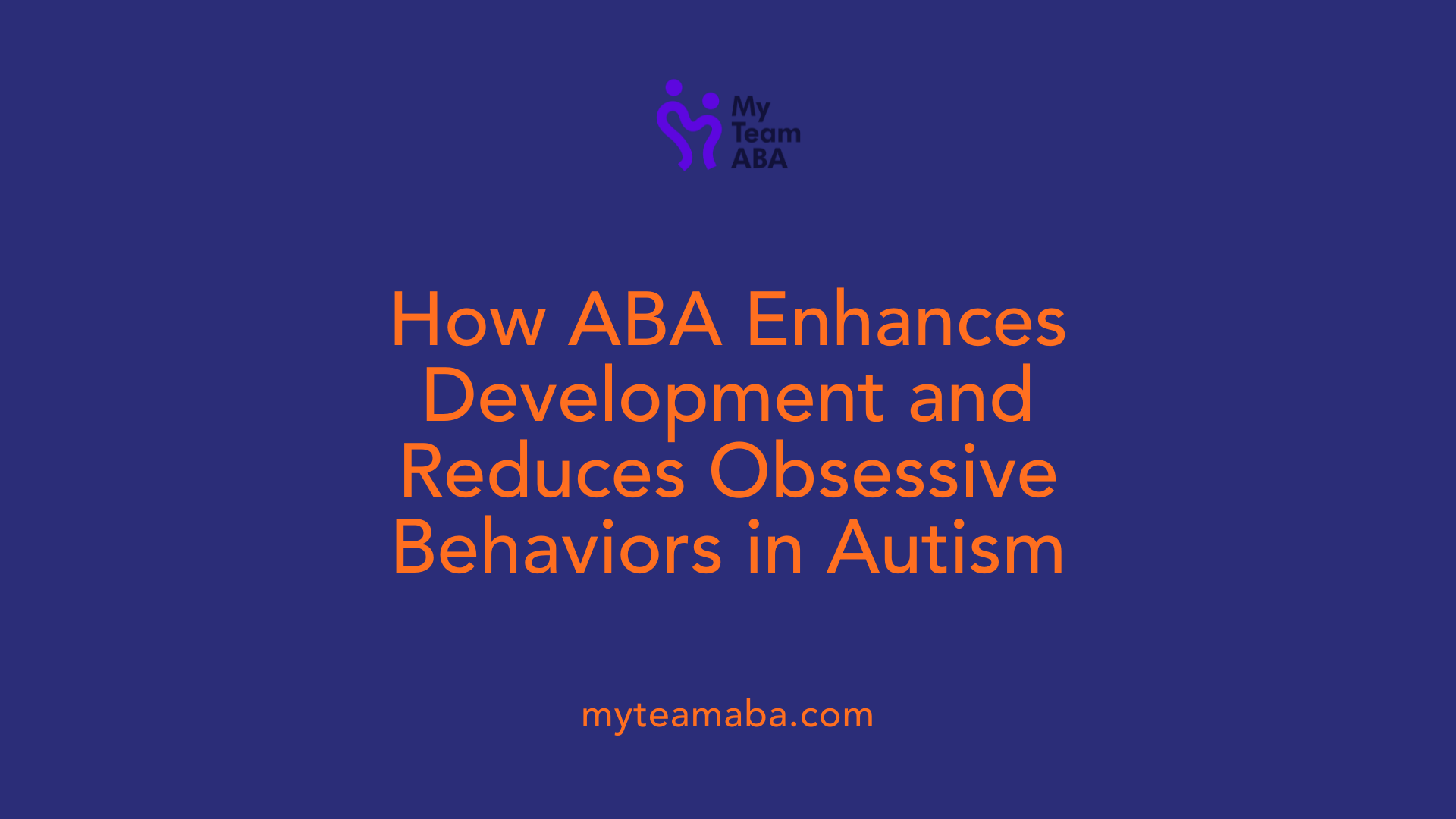How ABA Therapy Assists Children with Autism in Managing Obsessive Behaviors
July 18, 2025
Transforming Lives: The Impact of ABA Therapy on Obsessive Behaviors in Autism

Understanding the Role of ABA in Behavioral Management for Children with Autism
Applied Behavior Analysis (ABA) is a scientific, evidence-based approach that has been utilized since the 1960s to help children with autism spectrum disorder (ASD) manage a variety of behaviors, including obsessive tendencies. Rooted in learning theory principles, particularly operant conditioning, ABA focuses on fostering positive behaviors and reducing harmful or repetitive ones. Its tailored, data-driven interventions enable children to develop crucial skills such as communication, social interaction, and emotional regulation, which are often impacted by obsessive behaviors. This article delves into how ABA therapy supports children with autism in managing obsessive behaviors, examining its methodologies, research evidence, and practical benefits.
Foundations of ABA and Its Relevance to Obsessive Behaviors

What are the basic principles of ABA?
Applied Behavior Analysis (ABA) is a scientific approach rooted in learning theory, primarily using principles of operant conditioning to influence behavior. It focuses on understanding how behaviors are learned and how they can be modified through specific techniques. ABA emphasizes data-driven decisions, with treatment plans tailored to individual needs to promote positive changes.
One of the main strategies in ABA involves reinforcing desirable behaviors to encourage their repetition, while reducing harmful or disruptive actions. It also uses detailed assessments to set measurable goals across areas like communication, social skills, self-care, and academics.
How does operant conditioning apply within ABA?
Operant conditioning, developed by B.F. Skinner, is at the core of ABA. It explains how behaviors can be increased or decreased based on their consequences. If a behavior is followed by a reward (positive reinforcement), it’s more likely to recur. Conversely, if a behavior leads to a removal of an unpleasant stimulus (negative reinforcement) or is followed by a consequence that reduces its likelihood, it decreases.
ABA therapists employ techniques like ABC analysis—examining antecedents, behaviors, and consequences—to understand why behaviors occur and how to influence them effectively. For example, if a child engages in repetitive hand-flapping when anxious, understanding that the behavior provides temporary relief can help therapists develop strategies to teach alternative responses.
Why is ABA suitable for managing obsessive behaviors in autism?
Obsessive behaviors in autism often resemble compulsions found in Obsessive-Compulsive Disorder (OCD), with repetitive actions and strict routines. ABA’s structured, evidence-based approach makes it well-suited for addressing these behaviors. It helps identify the triggers (antecedents) and the outcomes (consequences) of obsessive actions.
Through targeted interventions, ABA can teach children to recognize triggers and develop coping strategies, replacing harmful routines with more adaptive behaviors. Techniques like Functional Communication Training (FCT) are used to help children express their needs more effectively, reducing compulsive actions motivated by anxiety.
Moreover, ABA programs are personalized, allowing therapists to set specific goals for decreasing obsessive behaviors and enhancing social, communication, and adaptive skills. Continuous monitoring ensures that treatment progresses according to data and individual response, making ABA a flexible and effective approach for managing obsessive behaviors in children with autism.
Techniques and Methodologies in ABA for Obsessive Behaviors

What are effective techniques and methodologies of ABA therapy for obsessive behaviors?
Applied Behavior Analysis (ABA) offers several proven techniques to help manage obsessive behaviors, particularly in children with autism spectrum disorder (ASD) who also exhibit OCD-like symptoms. These approaches focus on understanding and modifying behavior by employing structured, data-driven strategies.
One foundational methodology is positive reinforcement. This technique involves rewarding desirable behaviors to encourage their repetition and decreasing compulsive actions that may be harmful or disruptive. For example, a child might earn tokens or praise for completing a non-routine task, which gradually replaces compulsive routines.
Another crucial technique is task analysis. This involves breaking down complex, obsessive routines into smaller, manageable steps. By teaching each part separately, children can learn to perform daily activities without the need for compulsive rituals, which reduces anxiety and improves independence.
Visual supports, such as picture schedules or visual cues, are widely used in ABA therapy. These tools help individuals anticipate what will happen next, providing clarity and reducing uncertainty that often triggers obsessive behaviors. Visual supports foster understanding and promote compliant, adaptive responses.
Systematic desensitization can also be employed within ABA frameworks. This involves gradually exposing individuals to anxiety-provoking stimuli or situations in a controlled, step-by-step manner. Over time, this exposure decreases the individual's fear or compulsive response to these triggers.
Behavior chaining is another effective tool. It involves linking a series of behaviors together, teaching sequences in a logical order to promote functional routines and diminish obsessive fixations. Along with this, token economies—where individuals earn rewards for exhibiting desirable behaviors—are used to reinforce positive responses and reduce compulsions.
Family involvement enhances treatment outcomes. Parent-mediated interventions empower caregivers to implement ABA strategies at home consistently, ensuring that behavior modifications are reinforced across different environments.
In some cases, combining ABA techniques with cognitive-behavioral therapy (CBT), adapted for children with ASD and OCD, can further improve results. This integrated approach addresses not only the behaviors but also the underlying thoughts and feelings associated with obsessive actions.
Overall, the success of ABA methods hinges on individualized assessment and tailored intervention plans, carefully monitored and adjusted over time to meet each child’s unique needs.
Research Evidence Supporting ABA’s Effectiveness

What research supports the effectiveness of ABA therapy in treating obsessive behaviors in children with autism?
Research strongly indicates that ABA (Applied Behavior Analysis) is effective in reducing obsessive behaviors among children with autism. Numerous studies, including randomized controlled trials and meta-analyses, have demonstrated that early and consistent ABA intervention leads to significant improvements in repetitive and restrictive behaviors.
These studies have shown that tailored ABA programs can help children recognize triggers for obsessive actions and adopt more appropriate, less-stressful responses. For example, by applying techniques like functional analysis, therapists identify specific antecedents and consequences associated with obsessive behaviors, thereby developing precise intervention strategies.
The benefits of ABA extend beyond reducing obsessive behaviors. Children often experience improvements in social skills, language, and overall adaptive functioning. This comprehensive approach not only manages symptoms but also encourages broader developmental progress.
Meta-analyses consistently support the notion that the earlier ABA therapy begins and the longer it lasts, the better the outcomes. Many studies report sustained improvements long after intervention concludes, highlighting the importance of early, intensive treatment.
Overall, current scientific evidence positions ABA as a foundational, evidence-based strategy for addressing obsessive tendencies in autism, with many clinicians and organizations endorsing its use.
Impact of ABA on Behavioral and Developmental Outcomes

How does ABA therapy help children with autism manage obsessive behaviors?
ABA therapy plays a significant role in helping children with autism address obsessive behaviors. These behaviors often include repetitive routines or compulsive checking, which can interfere with learning and social interactions.
The core approach involves breaking down complex behaviors into small, manageable steps. This allows therapists and parents to teach children alternative, functional skills that serve similar purposes, such as calming or seeking comfort, without resorting to obsessive routines.
Positive reinforcement is a cornerstone technique in ABA. Children are rewarded with praise, preferred items, or activities when they demonstrate desired behaviors or better coping strategies. This encourages repetition of healthier behaviors and helps diminish problematic routines.
Programs are tailored for each child's specific needs, with continuous monitoring to assess progress. Interventions are adjusted based on data collection and behavioral responses, ensuring the strategies remain effective.
Overall, ABA facilitates increased flexibility and independence. It helps children develop healthier routines, manage their anxiety, and build adaptive skills. These improvements reduce the frequency and severity of obsessive behaviors, contributing to improved social functioning and overall well-being.
Improvements in cognition, language, and social skills
Research consistently shows that ABA can enhance cognitive abilities, language skills, and social interactions in children with autism. Structured teaching, reinforcement, and skill-building activities help promote learning in these areas.
Enhancement of adaptive functioning
ABA programs target practical skills such as self-care, communication, and daily living, enabling children to become more independent and improve their quality of life.
Long-term benefits of early intervention
Studies and reviews of ABA highlight that early and intensive intervention leads to better long-term outcomes. When started early and sustained over years, children tend to show significant gains in intellectual functioning, language development, and social skills.
| Outcome Area | Typical Improvements | Supporting Details |
|---|---|---|
| Cognition | Increased problem-solving, reasoning | Early ABA accelerates developmental milestones |
| Language | Better expressive and receptive language | Systematic speech and communication practices |
| Social Skills | Improved interaction and cooperation | Reinforcement of social gestures and peer interactions |
| Adaptive Behavior | Self-care, daily routines | Personalized goals for independence |
While evidence supports these positive effects, some limitations remain. Variability in practices and the need for long-term follow-up studies highlight ongoing research challenges.
In summary, ABA is a proven and effective approach to improving various behavioral and developmental outcomes in children with autism. Its structured, individualized strategies enable meaningful progress across multiple domains, supporting children to lead more adaptive and fulfilling lives.
Managing Obsessive Behaviors in Autism: Practical Strategies and Settings
How can strategies like visual supports and alternative activities help manage repetitive behavior in children with autism?
Visual supports and alternative activities are effective tools in managing obsessive and repetitive behaviors in children with autism. These strategies work by establishing a clear and predictable environment, which can reduce anxiety that often triggers repetitive routines.
Visual supports include tools such as daily schedules, social stories, and visual cues. These elements help children understand what to expect throughout the day, creating a sense of order and safety. For example, a visual schedule showing activities in sequence allows children to anticipate transitions, minimizing frustration or resistance.
Alternative activities serve to redirect a child's focus from disruptive or obsessive routines to more functional and engaging pursuits. When chosen based on the child's interests, these activities can provide a satisfying replacement for repetitive behaviors, encouraging new skills and social engagement.
Implementing these strategies early—around age 2—is linked with improved developmental outcomes. When integrated within a broader Applied Behavior Analysis (ABA) program, they form part of a comprehensive approach to behavioral management. ABA techniques often include positive reinforcement and structured routines, and they are supported by insurance coverage up to certain hours and limits.
Overall, combining visual supports with alternative activities in a tailored behavioral plan can significantly reduce distress caused by obsessional behaviors and promote adaptive skills. These strategies not only help manage specific behaviors but also contribute to the child's overall development and well-being.
Settings where ABA is implemented (home, school, community)
ABA services are versatile and can be delivered in various environments to suit individual needs. Common settings include the child's home, school, and community settings such as extracurricular activities and social groups.
At home, ABA therapies can be integrated into everyday routines, providing consistency and reinforcing skills across different contexts. This setting allows for close involvement of family members, who are trained to implement behavior strategies.
In school environments, ABA techniques are used by educators and trained therapists to support learning and social interactions. Classroom-based interventions can include visual supports, reinforced learning, and social skills training.
Community settings expand opportunities for real-world practice of skills. Outings to parks, stores, and public events offer valuable opportunities for generalization of learned behaviors and social integration.
Providing ABA in multiple settings ensures generalization of skills, helps reduce behaviors in naturally occurring environments, and enhances the child's overall functioning.
Importance of individualized treatment plans
Every child with autism has unique strengths, challenges, and preferences. Therefore, ABA programs must be tailored to meet individual needs through detailed assessments and personalized goals.
An effective treatment plan specifies targeted areas such as communication, social skills, self-care, play, and academic skills. These goals are adjusted continually based on ongoing data collection and progress reviews.
A customized plan also considers the child's sensory sensitivities, behavioral history, and family priorities. This personalized approach increases the likelihood of success and helps address specific obsessional behaviors more effectively.
Trained professionals, often Board Certified Behavior Analysts (BCBAs), oversee and modify these plans. Their ongoing monitoring ensures the strategies remain aligned with the child's evolving needs, maximizing developmental gains.
In conclusion, managing obsessive behaviors in children with autism involves applying practical strategies like visual supports and alternative activities across various settings. Customizing interventions within individualized plans ensures these approaches are effective, meaningful, and supportive of each child's growth.
Conclusion: The Enduring Benefits of ABA in Autism Management
Applied Behavior Analysis (ABA) is a scientifically grounded approach based on the principles of learning theory, primarily operant conditioning. It aims to modify behaviors associated with autism spectrum disorder (ASD) by increasing helpful behaviors and reducing problematic ones.
Research consistently shows that ABA interventions lead to improvements in multiple developmental areas, including cognition, language, social skills, communication, and adaptive behavior. Meta-analyses suggest that early and long-term ABA programs—often lasting from one to three years with intensive hours per week—are particularly effective in producing positive outcomes.
Studies, including randomized controlled trials and single-case designs, support ABA's efficacy. These studies often report gains in language, attention, memory, academic skills, and social functioning. While much of the research is based on small sample sizes, the growing trend towards larger-scale studies continues to strengthen the evidence base.
Despite its benefits, ABA faces some limitations. Variability in practices, small sample sizes, and limited long-term follow-up data highlight the need for ongoing research. Additionally, there is a call for more studies examining quality of life improvements, beyond behavioral measures.
ABA not only addresses core ASD symptoms but also offers strategies to help with co-occurring conditions, such as obsessive-compulsive disorder (OCD). It can assist in identifying triggers and replacing compulsive routines with more adaptive behaviors through techniques like functional analysis and reinforcement.
In cases where OCD symptoms are involved, ABA focuses on observable behaviors by shaping responses to environmental cues. It may be combined with other therapies, such as cognitive-behavioral therapy (CBT), for comprehensive treatment, especially since OCD behaviors are performed consciously to reduce anxiety.
Looking ahead, ongoing research aims to refine ABA strategies, expand its scope to larger populations, and investigate its long-term impact on quality of life. Integrating technological advancements and multidisciplinary approaches promises to enhance the effectiveness and accessibility of ABA programs.
| Aspects Covered | Benefits | Limitations | Future Directions |
|---|---|---|---|
| Overall Effectiveness | Supports improvements in communication, social skills, academics | Variability in practice methods | Larger, more diverse studies; focus on quality of life outcomes |
| Co-occurring Conditions | Can modify OCD-like behaviors and routines | Small sample sizes | Integration of ABA with other therapies (e.g., CBT) |
| Long-term Impact | Significant gains with early, sustained intervention | Limited long-term follow-up data | Use of technology; personalized treatment plans |
ABA’s proven track record, combined with ongoing research, continues to make it a cornerstone of ASD management, offering meaningful improvements in children’s development and quality of life.
Summing Up: The Transformative Power of ABA in Managing Obsessive Behaviors
ABA therapy has proven to be a vital, scientifically supported approach for helping children with autism manage obsessive behaviors. Its structured methodologies, including positive reinforcement, visual supports, and functional assessments, enable significant behavior modification and skill development. Although research continues to evolve, current evidence highlights ABA’s effectiveness in reducing repetitive and obsessive behaviors, improving communication, social skills, and overall adaptive functioning. As therapy practices improve and more large-scale studies are conducted, the potential for personalized, long-lasting benefits increases. Ultimately, ABA’s role in fostering independence and enhancing quality of life underscores its importance in autism management. Continued research and innovative adaptations will further solidify its position as a cornerstone of behavioral intervention, offering hope and tangible progress for children, families, and caregivers.
References
- Applied Behavior Analysis in Children and Youth with Autism ...
- Applied Behavior Analysis (ABA) | Autism Speaks
- Obsessive-Compulsive Disorder (OCD) and Autism
- Why is OCD so Common in Children with Autism? The Facts!
- Applied Behavior Analysis (ABA) for Children With Autism
- Applied Behavior Analysis (ABA) - CHOP Research Institute
- Division of Developmental and Behavioral Pediatrics Resources
- Evidence-based Treatment Options for Autism
- Why is OCD so Common in Children with Autism? The Facts!
